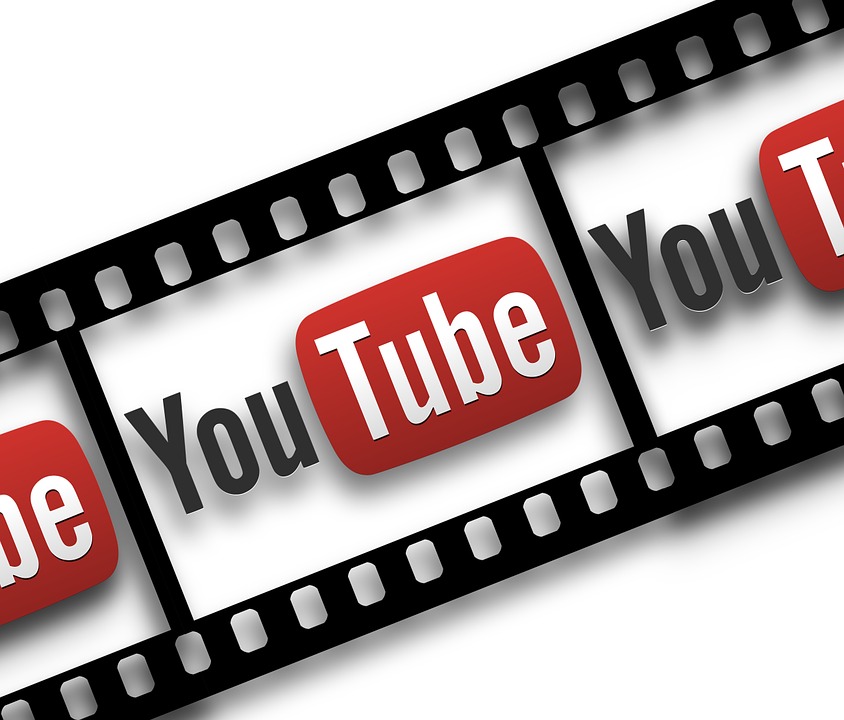
Introduction
This brief considers three instances in which social media has proved an important arena for the creation and dissemination of the value embedded in intellectual property. The first two are decided cases whereas the last is a reported market event. The brief concludes with an overview of the relevance of these cases to the discussion on intellectual property and social media.
Catherine Masitsa and Another -Vs- Samantha Ireri [2019] eKLR
This was a case filed by the Plaintiffs alleging infringement of the Trademark No. 76185 SAMANTHA in 12 classes and the Samantha Logo in class 45 registered on 21stSeptember 2012 and 13thMay 2011 respectively. In respect to the suit, the registration of SAMANTHA as a trademark was that under class 3 in relation to soaps, perfumery, essential oils, cosmetics, hair lotions and dentirifices.
The action in issue: the Defendant allegedly operated an Instagram page known as color-by-Samanthawhich showed that the Defendant was a make-up artist. A particular client of the Plaintiff perceived color-by-Samantha as part of the Plaintiff’s brand. Specifically, the plaintiff contended that the Defendant’s use of the name color-by-Samanthacould cause confusion with the Plaintiff’s trademark SAMANTHA.
The Defendant responded that: the trade name in question was in place before the trademark was registered, Samantha was her given name, the name of the page was not visually or phonetically similar to SAMANTHA, and they did not manufacture the products covered by the trademark.
In its Ruling, the court found that the Plaintiffs had failed to discharge a prima facie case and could therefore not succeed.
Newton Oirere Nyambariga -VS- KCB Bank Kenya Limited and Another [2017] eKLR
The action concerned a television reality show “Lions Den”. The Plaintiff submitted that he was the registered copyright owner of “Lions Den” and the owner of the mark “LIONSDEN”, and that he shared with Kenya Commercial Bank (KCB) a proposal based on a television reality show which was to be comprised of a number of entrepreneurs making presentations before a panel of investors with the objective of having the investor invest in the entrepreneurs’ ideas. KCB would not partner with the Plaintiff citing budgetary constraints.
The suit was triggered when KCB and Quite Bright Films Limited caused to be aired a show titled Lions Den. The Plaintiff alleged infringement and passing off against his copyright and his mark.
In their agreement, the Defendants envisioned some of their roles (specifically for KCB) :
- Running all public relations elements to the Programme campaign including Twitter, Facebook, other social media and press releases, which would include regularly updated information on investments made by the investors participating in the Program.
- Creating and operating a dedicated program website/YouTube channel linked directly to KCB existing web/YouTube platform.
Due to the active role taken by KCB and the nature of its involvement, the Court declined KCB’s request to be struck out of the proceedings, as the engagements mentioned above suggested substantial involvement by KCB in the alleged infringement of copyright in the online and television environment.

YouTube and NTV Copyright Dispute
In November, 2018, NTV, a television station, suffered a major blow after video content service provider YouTube blocked its online channel over alleged copyright infringement.[1]The television station, which was at the time the third largest in terms of viewership, had 280,894 subscribers on YouTube and has so far uploaded 50,775 videos.

Despite the particulars not being provided by YouTube, it was reported[2]that the blocking was likely related to videos posted on social media by third-parties which were then picked by NTV without acknowledging the original copyright holders.
Lessons
Social media platforms are an important flashpoint for various intellectual property assets and concerns. From an intellectual property assets perspective, social media is important mainly because it combines platforms, users, communication, and content sharing on a grand scale, all compounded by the unique scalability[3]provided by the digital environment. This is consistent with the slightly interesting thesis that courts have not created brand new rules and paradigms to grapple with social media ubiquity and complexity, but rather have consistently applied existing legal standards to the social media space.[4]In other words, as an example, infringing an author’s copyright by “re-posting”, “re-tweeting”, “sharing” or “saving” content is no different than other forms of copyright violations say, for instance, unauthorised photocopying of a book or other text.
This notwithstanding, a preliminary note might help one understand why social media law presents the apparent image of an all-too-new legal paradigm (which as we have seen above is not exactly the case). The novelty with social media is not in the operative rules of law, or the relevant conceptual approaches of the legal problems that arise as a result of it. Rather, the novelty is in the nature of social media as a communication and an information dissemination system. As one of the quintessential developments of the internet and the digital age, social media platforms engender certain characteristics that ultimately complicate (but do not fundamentally change) the ensuing intellectual property law questions.
To borrow from Pamela Samuelson’s[5]classic exposition, the “digital age” has engendered the following attributes (among others) that are important for intellectual property discourses:
- Ease of replication: As reprography technology has improved, it has become ever more difficult for copyright owners to exercise control over replication of their works. An easy example comes to mind: sharing of photographs on Instagram. It has been remarked elsewhere that “being able to share content instantly often removes the deliberative process of considering such content before it gets posted.”[6]
- Ease of transmission and multiple use: When a single pirate copy can be put, not only in an isolated computer but loaded onto a computer connected to a network of computers or users, the apprehension by copyright owners automatically increases. One only need look at Facebook’s “sharing” functionalities and other equivalents to grasp the gravity of the issue.
- Plasticity of digital media: With printed works, all of the extant copies of works would stay the same. This is transcended in the digital age, as social media platforms have functionalities and editing software that can alter even the fundamental nature of a copyright work.
- Compactness of digital works: By virtue of their alphanumeric storage mechanism, works in digital form are inherently much easier to steal.
- New search and link capacities: This is even more evident in social media, where chains of links may be created ultimately with implications on copyright, trademark, or other intellectual property material.
The Catherine Masitacase is instructive in demonstrating the developing awareness by courts that social media platforms have an important contribution to how intellectual property assets influence the market of commodities. Despite the determination in this matter being fairly basic, it provokes the discussion on the important role that photo-sharing social media platforms such as Instagram have in shaping the market in particular goods or services. A collateral consequence is that images and page names created by online marketers may infringe registered trademarks of pre-existing market players dealing in those goods and services.
The NTV case is useful in conceptualizing the idea of scalability as a notable aspect of social media (platforms) predisposing them to a myriad of intellectual property concerns. In that case, it is reported that the content blocking by YouTube was as a result of an expansive trail of copyright violations even before the action in question reached the YouTube platform. Scalability here is evident in that the various social media platform constituted the machinery through which the impugned works were shared across networks of users online.
The Newton Oirerecase is further indicative of the fact that social media is being recognised as an intellectual property asset, and more so by the courts. In that case, YouTube and Facebook, both social media platforms, were considered by the court in reinforcing an aspect of intellectual property already given recognition, namely copyright.
The above cases are important in that they disclose that data or information on social media platforms has both economic and moral value, in the same way that typical intellectual property assets have value.
With respect to copyright, for example, the question to be explored by the instruments of law is whether authors should be allowed to control the uses of copies made of their works by consumers, a tool not hitherto available to them under copyright law. The need in this case may have been amplified by the unique characteristics of digital media engendered in social media platforms.
Conclusion
As noted by Samuelson, any of the characteristics of digital media above would be enough to cause some disruption and adjustment in the doctrines of the existing intellectual property system.
Due to the nature of technology, which usually leads the law (or, rather, the law trails technology), it is left to be seen whether courts can appreciate instances in which departures are to be made from conventional intellectual property law principles, and when the said principles are to remain the same.
Beyond all these observations, the important thing to remember is that social media platforms have different rules and adopt various measures to protect themselves and their users. These measures will be apparent once one takes their time to read each platform’s Terms of Service.
[1]See https://businesstoday.co.ke/youtube-switches-off-ntv-over-copyright-breaches/, accessed on 9th March, 2019.
[2]See https://businesstoday.co.ke/youtube-switches-off-ntv-over-copyright-breaches/, accessed on 9th March, 2019.
[3]The characteristic of a system, model or function that describes its capability to cope and perform well under an increased or expanding workload or scope. See https://www.investopedia.com/terms/s/scalability.asp, accessed on 12thMarch, 2019.
[4]Hart C.E., ‘Social media law: Significant developments’, 2 The Business Lawyer, Winter 2016-2017, 235-242, 235.
[5]See Samuelson P, ‘Digital media and the changing face of intellectual property law’, 16 Rutgers Computer & Technology Law Journal, 1990, 323-340.
[6]Ciccatelli A, ‘Photo sharing on social media and copyright infringement: What you need to know”, available at https://www.ipwatchdog.com/2017/12/15/photo-sharingsocial-media-copyright-infringement/id=91022/, on 1stApril, 2019.